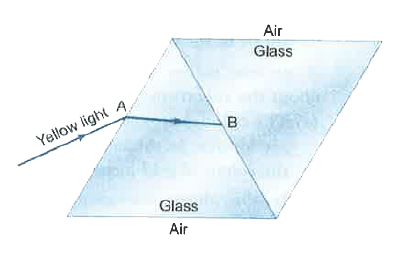Is air around us always transparent? Discuss
Step-by-Step Solution:
1. Understanding Transparency:
- Transparency refers to the ability of a substance to allow light to pass through it without significant scattering. When we say something is transparent, we mean that we can see through it clearly.
2. Nature of Air:
- Under normal conditions, air is composed of gases (like nitrogen, oxygen, and small amounts of other gases) that do not scatter light significantly. Therefore, air is generally considered transparent.
3. Conditions Affecting Transparency:
- However, the transparency of air can change under certain conditions. For example, when there are particles suspended in the air, such as dust, smoke, or water droplets (as in clouds), they can scatter light.
4. Examples of Non-Transparent Air:
- Thick smoke from a fire or pollution can make the air appear hazy or opaque, meaning we cannot see through it clearly. Similarly, thick clouds can also obstruct our view of the sky.
5. Conclusion:
- While air is typically transparent, it is not always so. The presence of pollutants, smoke, or moisture can affect its transparency, making it less clear.
Final Answer:
Air around us is generally transparent, but it can become non-transparent under certain conditions, such as when there is thick smoke or clouds present.
---
- Transparency refers to the ability of a substance to allow light to pass through it without significant scattering. When we say something is transparent, we mean that we can see through it clearly.
- Under normal conditions, air is composed of gases (like nitrogen, oxygen, and small amounts of other gases) that do not scatter light significantly. Therefore, air is generally considered transparent.
- However, the transparency of air can change under certain conditions. For example, when there are particles suspended in the air, such as dust, smoke, or water droplets (as in clouds), they can scatter light.
- Thick smoke from a fire or pollution can make the air appear hazy or opaque, meaning we cannot see through it clearly. Similarly, thick clouds can also obstruct our view of the sky.
- While air is typically transparent, it is not always so. The presence of pollutants, smoke, or moisture can affect its transparency, making it less clear.
Air around us is generally transparent, but it can become non-transparent under certain conditions, such as when there is thick smoke or clouds present.
Topper's Solved these Questions
- LIGHTBOOK - NCERT EXEMPLARCHAPTER - LIGHTEXERCISE - LONG ANSWER QUESTIONS
3 Videos
- LIGHTBOOK - NCERT EXEMPLARCHAPTER - LIGHTEXERCISE - LONG ANSWER QUESTIONS
3 Videos
- FUN WITH MAGNETSBOOK - NCERT EXEMPLARCHAPTER - FUN WITH MAGNETSEXERCISE - LONG ANSWER QUESTIONS
7 Videos
- MOTION AND MEASUREMENT OF DISTANCES BOOK - NCERT EXEMPLARCHAPTER - MOTION AND MEASUREMENT OF DISTANCES EXERCISE - LONG ANSWER QUESTIONS
4 Videos
Similar Questions
Knowledge Check
A small air bubble is inside a transparent cube of side length 24 cm and of refractive index 43 If the apparent distance air bubble from a face is 9 cm then its apparent distance from opposite face is
A6cmB8cmC9cmD12cmGlass is transparent but its porderd from is not transparent because
Alight falling on the porderd glas scattersBlight reflects backCproperties of glass disappers from its prodered form Noneof the aboveDNone of theseAssertion (A) : Democracy is based on consultation and discussion.
Reason (R): A democratic decision always involves many persons, discussions and meetings.ABoth A and R are true and R is the correct explanation of A.BBoth A and R are true but R is not the correct explanation of A.CA is true but R is false.DA is false but R is true.
An identical prism is stuck to the first prism using a transparent adhesive with the same refractive index as the glass. This is shown in figure. In this figure, draw the path of the ray after it has reached B and until it has passed into the air again.

View SolutionSpeed of light in air is always less than that in glass.
True/False
View SolutionIn agar plate medium having bacteriophages and bacteria, there are clear transparent areas around the growth of bacteria. These areas are called
View SolutionThe critical angle of a transparent crystal is 60∘. Then its polarizing angle is
View SolutionWhen a picture drawn on paper is seen through a slab of a transparent material of thickness 5 cm, it appears to be raised by 1.5 cm. The critical angle at the boundary of this transparent material and air is -
View Solution
